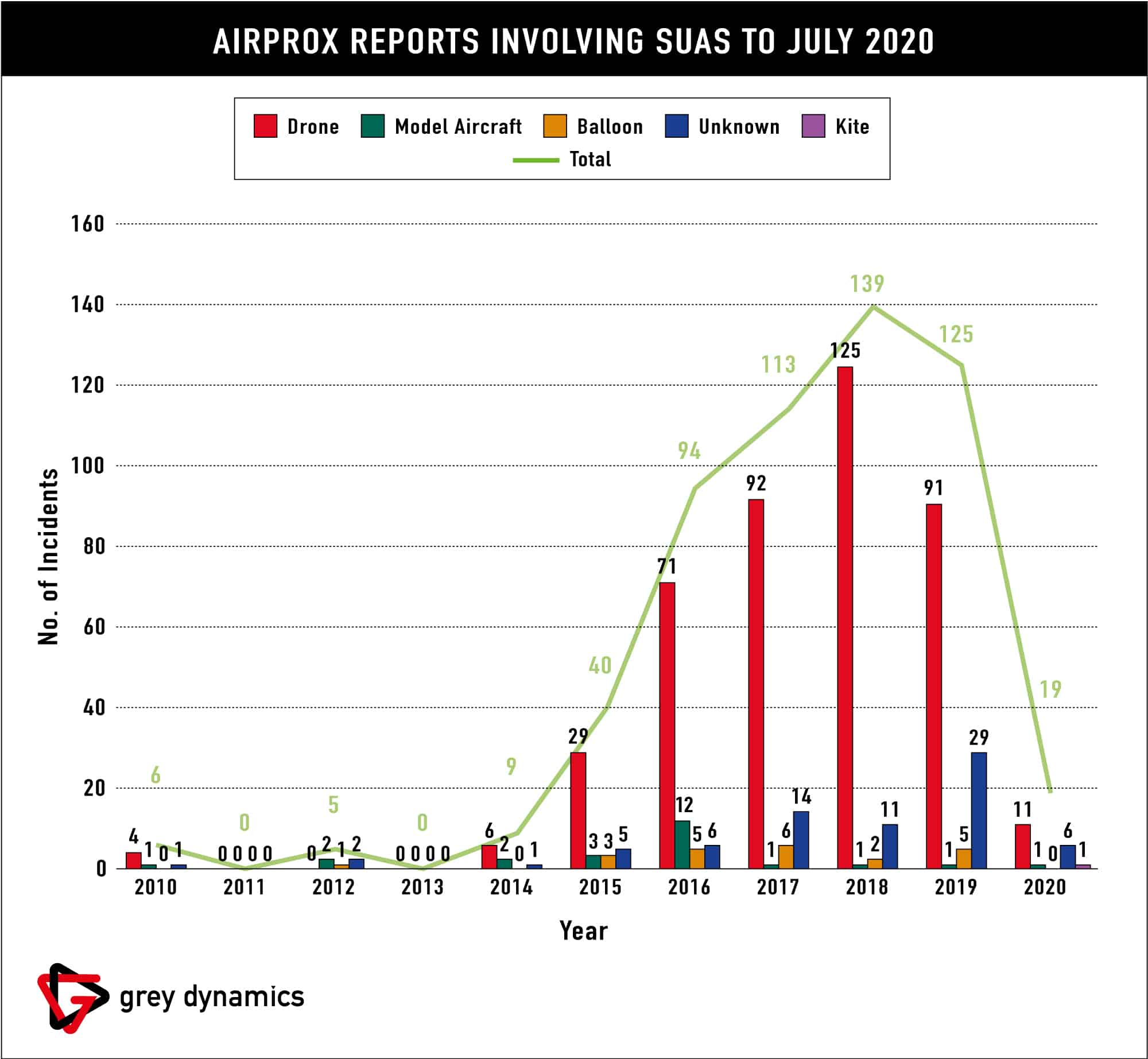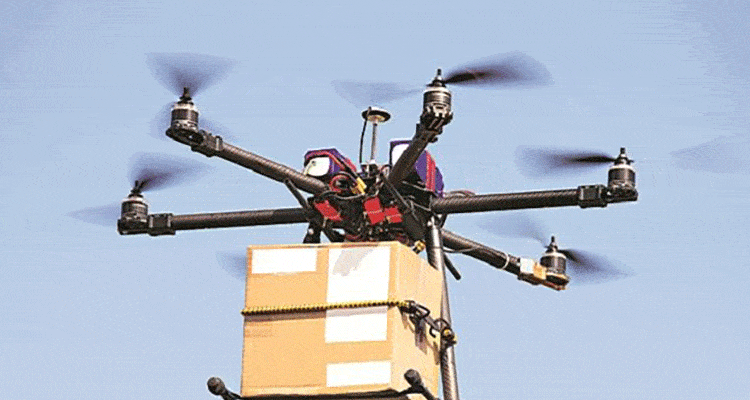This article will assess the current state of commercial drone competition, regulation and technology along with the potential security risks associated with its operation. There is a growing concern amongst workers in the Gig Economy regarding working conditions and job security, as recently covered by Grey Dynamics.
However, automation technology has the potential to exacerbate these concerns and make a large portion (1.5 million jobs are at risk in the UK according to the Office of National Statistics) of these jobs obsolete.
Key Judgements
- The FAA granted Amazon its part 135 air carrier certification serves as a landmark in the future use of drones. The third company to receive such accreditation, with Alphabet and UPS the other two, these ‘Big Three’ companies will almost certainly set the market standard in drone technology and use.
- It’s highly likely that this will impact the Gig economy following widespread adoption when the FAA and other aviation authorities publicise regulations for drone usage. Last-mile delivery jobs will likely be the most highly impacted.
- The Gig economy will highly likely not see this impact for the next five years. The FAA will almost certainly not publish its regulations before 2024 at the earliest.
Why This Matters
The gig economy has presented itself as a potential lifeline for many people who may have lost their job during the COVID-19 Pandemic. For example, there were 9.5 million people furloughed and just under 195,000 redundancies in the UK. Many people have had the same idea of supplementing income during COVID-19 within the Gig Economy. As reported by Grey Dynamics, 59% of Gig workers in Brazil have seen incomes reduce during the Pandemic when compared year on year. With more and more people seeing these pay-per-job apps as a primary income, the threat from automation becomes an ever-increasing problem.
30 Minutes or Less: Amazon
The recent Federal Aviation Administration (FAA) approval for Amazon to start delivering packages by drones exemplifies this threat to Gig workers. Receiving its Part 135 air carrier certificate for its drones on the 31st of August 2020, this represents a 7-year development period for Amazon. There was scepticism when initially announced during a 60 minutes interview in December of 2013 (it was thought of only as a publicity stunt). This was amplified when it was said that it was a minimum of 4 to 5 years before it would be ready for government approval.
The first flight of the drone only occurred at the four-year time frame. Still far from government authorisation, the approval in August 2020 represented an “important step” according to Amazon. It will likely be in a development cycle for several years before widespread deployment. The goal is delivering parcels under 5 pounds (of which Paul Misener, Amazon’s vice president for global public policy, claims makes up the majority of all Amazons orders) within 30 minutes from the last click of an order. It will almost certainly put the majority of Amazon delivery positions in a position of vulnerability.
Rest of the Market & Its Current State
Competition
Amazon is not the first company to receive FAA certification. It is third in line for this achievement, with UPS and Wing (owned by Google’s parent company Alphabet) receiving part 135 certificates. UPS received its certification on the 1st of October 2019, with Wing starting operations in the same month.
Wing partnered with FedEx and Walgreens in Virginia to provide limited services, and UPS are flying medical supplies within a hospital system in Raleigh, North Carolina. During the COVID-19 Pandemic, Wing has experienced a doubling in deliveries in its American operation, exemplifying what could happen to Gig workers should this technology become mainstream.
Though smaller companies are seeking approval by the FAA and exist in the rest of the world (such as providing medical supplies in Africa as reported by Grey Dynamics), the trio of companies will likely shape the industry in the years to come. With Alphabet providing outsourcing for companies who wish to implement drone delivery, and Amazon / UPS providing a large number of services themselves, last-mile delivery ‘Gig’ jobs have almost certainly never been under as much threat.
Regulation & Technology
For smaller companies to start delivering via drone in the United States, there is a long and detailed process to receive part 135 certification. This process is modified on the fly, as waivers are sought due to requirements such as pilots wearing seatbelts and flight attendants being present in-flight. To operate drones in this type of business logistics such as pilot training and a drug program have to be shown as the present.
Despite smaller companies seeking approval, there is still a high human cost when it comes to a drone service. Although part 135 certificates have been handed out, there are still limitations on how the drones can operate. The pilots have to pass a commercial drone pilot test to get a license, and drones have to be observed by humans across the entire flight (without binoculars) to prevent crashes.
This high human cost and long development time lend the market to large companies such as Amazon with large, expendable cash reserves. We will likely only see smaller companies successfully run drone services by the end of this decade due to the initial start-up costs and development needed currently.
Security Concerns
There have been a series of security concerns regarding the use of drones within the past several years. There were over 30 hours of disruption in the Christmas travel period in December of 2018. 1,000 flights and over 140,000 passengers were disrupted. Along with this, over £790,000 was spent on the police operation and later investigation. During 2019, there were 91 incidents involving drones in the UK, according to Airprox. 17 of these were within the ‘A’ class, which present the most amount of danger.

Where Do We Go From Here?
Gig Economy
With an increase in the supply of Gig workers becoming saturated, companies are having to find ways to survive during a COVID-19 induced recession. Machines do not get ill or need to isolate in the current climate, and governments incentivise companies to buy software and devices through tax breaks. In the United States, there is a 30% tax on workers pays for a company, but only 3% on any electronic equipment. With Economists from MIT and Boston University predicting 2 million jobs within the United States manufacturing industry being lost to automation, it’s highly likely we will see a similar situation occur in the Gig Economy.
With layoffs a high likelihood in this scenario, people will need to be retrained in new disciplines to prevent massive unemployment. Although unemployment through technological innovation is nothing new, access for retraining is not necessarily universal. Without easy to access education and retraining centres, masses of people out of work due to COVID-19 will almost certainly struggle to find a job in the long term, hurting the economy even more as a result.
A Universal Income presents a possible safety net for those whose jobs are taken over by automation. While proposed in many forms, from a $500 a month state payment to all to a negative income tax (a state payment if one’s tax bracket is below a certain yearly income), they all propose a ‘floor’ of income to protect the most vulnerable. This would almost certainly protect those who find themselves in a state of transition and retraining in a future economy dominated by automation.
Regulation
As discussed throughout this article, regulation from aviation authorities will need to catch up before drones can become the new normal. With the goal for Amazon at present is to provide packages within 30 minutes given the customer is in a 12km range from a warehouse, the FAA currently has no allowances for this within its guidelines. No company, despite receiving certification from the FAA, is allowed this kind of autonomous delivery without the human observers on the ground and highly-trained pilots. Despite these companies almost certainly wanting a streamlined process to gain operational authority, the FAA isn’t expected to release drone specific guidelines until 2024 at the earliest.
Conclusion
The FAA decision to grant Amazon a class 135 certificate is undoubtedly a milestone in bringing drones closer to commercial viability. The Gig economy will almost certainly see a reduction in available jobs after the FAA and other aviation authorisations enact new drone regulations. Despite regulations not being in the immediate future, it’s critical that developments in this market are observed. The Gig economy will almost certainly not see an impact regarding automation before the next half of this decade.
Image: Word From Cyprus (link)


